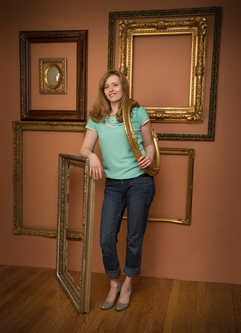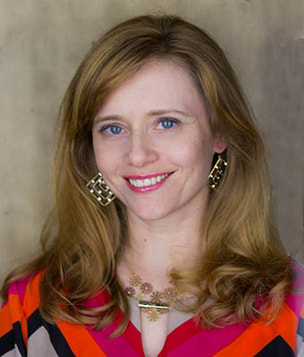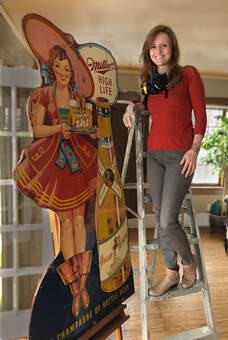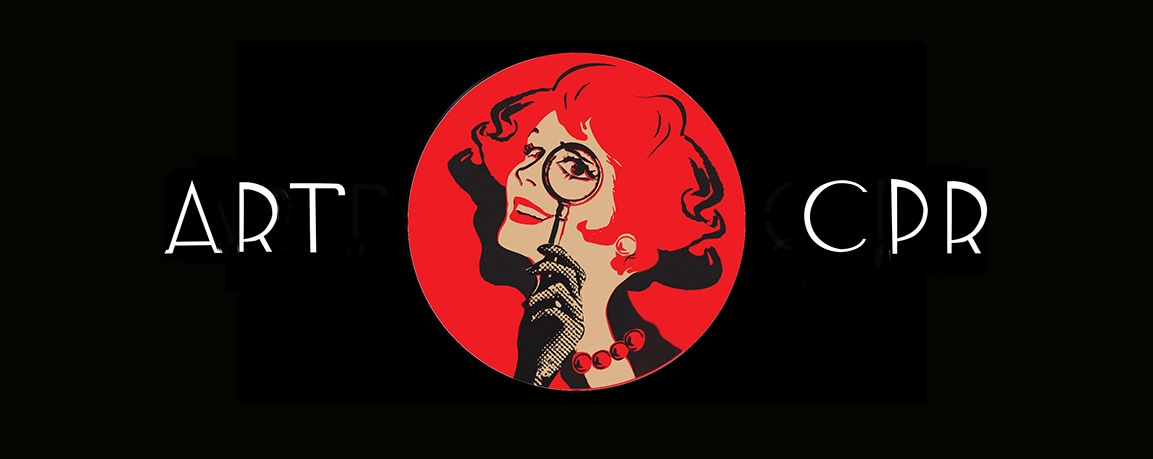art cpr's conservator
With 22 years of restoring art in private practice, Monica Mull's business Art CPR LLC, started in 2017, strives to preserve fine art and family heirlooms. It is her professional mission to help art age gracefully. In 1995, Monica dreamed of caring for artworks while in the Milwaukee Art Museum's Art Satellite program, where she wondered... "How do they preserve all these art objects that are hundreds of years old?!" And after mulling that over, decided -- "That's what I want to do!" So, in 2001 she earned her degree from the University of Wisconsin-Milwaukee. 2000 - 2017 she restored artwork at Landmarks gallery in Milwaukee, apprenticing under conservators, framers and appraisers. Then in June 2017 she created her business Art CPR LLC. Monica divides her time between teaching private art conservation classes, mentoring female entrepreneurs on how to run an eco friendly business and conserving art for private clients.
A lifelong learner, Monica continued her education at the Campbell Center, International Preservation Studies Center & Beloit college 2015 - 2023.
She is honored to have studied under knowledgeable conservators such as:
Chris Stavroudis of the Getty Conservation Institute
Hubert Baija of the Rijksmuseum in Amsterdam
Susan Russick of the Northwestern University Libraries in Chicago
Rebecca Pollak of Sotheby's
James Bernstein, private practice in San Francisco
Alice Carver-Kubik of the Image Permanence Institute, Rochester Institute of Technology
She is honored to have studied under knowledgeable conservators such as:
Chris Stavroudis of the Getty Conservation Institute
Hubert Baija of the Rijksmuseum in Amsterdam
Susan Russick of the Northwestern University Libraries in Chicago
Rebecca Pollak of Sotheby's
James Bernstein, private practice in San Francisco
Alice Carver-Kubik of the Image Permanence Institute, Rochester Institute of Technology
- The Image Permanence Institute's 2018 course on Photo Process ID gave Monica the skills to identify antique photos.
- Hubert Baija's 2016 course on picture frame conservation taught Monica about gold leaf, in-gilding, frame corner stabilization, composition, papier-mache, frame corner gap filling, treatment reporting and the history of picture frames.
- Susan Russick's 2015 course on paper conservation taught Monica techniques in cleaning, humidifying, un-rolling highly rolled papers safely, de-acidifying yellowed papers, creating paper pulp fills and the history of paper.
- James Bernstein's 2017 course, "Mastering In-painting" updated Monica's skills in painting conservation, pigment education, filling and coloring losses in reversible ways.
Eco-friendly mission
I believe in being honest and transparent about my eco friendly pursuits. Here is an explanation of my efforts:
I'm expanding upon the 3 R's: "Reduce, Reuse, Recycle"
by adding: Report, Research, Repeat, Rally, Relocate, Refuse, Repair, Replace, Reheat, Rot & Remodel.
Report:
Below, I share the ways my company is being sustainable and eco friendly. More transparency = less greenwashing.
I report my feedback to many companies, writing emails to encourage them with sustainable tips and requests.
Research:
I am a participant in the SIC: Sustainability In Conservation group. Weekly, I read environmental news articles.
Repeat:
Repeat the ideas to others! SIC Instagram page has featured Art CPR eco friendly tips! I teach eco friendly sustainable business practices, by inspiring every student, intern, assistant and colleague that comes through my studio to have the same eco habits I use in the studio.
Rally:
I regularly sign petitions and make donations for causes such as: Clean Wisconsin, Milwaukee Riverkeepers, Beyond Plastics, Union of Concerned Scientists, Water Alliance, Friends of the Earth, Natural Resources Defense Council, Sierra Club and more.
I write to other businesses to encourage sustainability. (tip: I keep general DRAFTS in email, then customize them to each business.)
Relocate:
When art and supplies move from place to place, there are eco friendly ways to transport them safely. Art CPR does not purchase new packaging materials, all packaging received is reused or donated.
Art: When I make an appointment for my clients to pick up their artwork, I ask them to bring blankets, towels or their own wrapping. This has been a huge success, 99% of clients do it!
Supplies: When I pick up items from my local frame manufacturer, I bring a padded portfolio case and moving blankets, with bungee cords. I have to diligently leave a note on my order every time to request no plastic, otherwise they will bombard my supplies with a ton of plastic saran wrap.
Twine, bungee cords, cotton rope: I use these to avoid wasteful plastic tape and plastic wrap.
Replace:
Paperless office, digital work orders = replacement for a business run on paper
The only paperwork that is printed are the treatment reports which are affixed to the backside of each artwork. Ink cartridges are mailed for refill or recycle.
Pre-used paper based packaging and pre-used boxes = replacement for bubble wrap and styrofoam
Blueboard or cardboard (with cotton archival paper directly behind art) = replacement for non-recyclable foamcore
2022 Energy Star laundry machine = replacement for 20 year old machine
I launder all studio fabrics: moving blankets, cotton and bamboo towels, cotton gloves, and aprons. The old machine was recycled at a local metal recycler.
Bamboo skewers with hand rolled cotton = replacement for store bought Q-tips
Washable towels = replacement for disposable, single use paper towels
Cotton cloth can be purchased secondhand; bamboo paper and blue shop towels can be purchased without plastic packaging.
Liquid water-based adhesives (purchased in bulk gallon containers) = replacement for wasteful tapes & the release paper from double sided tape.
Framers please consider water-based adhesives for adhering craft paper to the backsides of framed artworks.
Craft paper tape = replacement for plastic tapes
Modular Cleaning Program water-based cleaners for artifacts = replacement for most solvent cleaners
Paper grocery bags = replacement for plastic garbage bags
Bar soap = replacement for liquid soap with wasteful plastic packaging
Natural or sea sponges (compostable) = replacement for synthetic sponges
Pencils = replacement for plastic pens
Wood handled natural bristle paintbrushes & brooms = replacement for plastic/synthetic brushes
Refuse:
Limiting the use of non recyclable materials and packaging in favor of paper and metal packaging.
Communicating requirements with suppliers upon ordering = refusing plastic packaging
Informing companies that I do not accept art or supplies wrapped in styrofoam or plastic packaging.
BYO canvas bags = refusing a store's plastic bags
Repair:
The main purpose of this business is to repair old artworks and picture frames, and keep them out of the landfill.
When work shoes need repair, they go to Olde Town Cobbler.
When Sharpie markers get dry, they are dis-assembled then re-wet using isopropyl alcohol via an eyedropper tool.
Mechanical heat press machine - purchased used from a local source, repaired and put into use for paper flattening and drying.
Rot:
Items composted on site in the Aerobin 200 include:
food scraps, loose tea, old cotton toweling, old wood plank backings removed from artwork, cotton swabs used in cleaning paintings with safe water-based cleaners
Re-heat:
95% of lunches at the studio are homemade meals, re-heated in the kitchen space provided. Takeout meals are rarely ordered due to the single use packaging, and limited to takeout in paper boxes (like pizza.) Some of the food at the studio is purchased from Wellspring CSA farmshare, Outpost Co-op & farmers markets. The studio is equipped with a kitchen to encourage all to reduce takeout. Workers enjoy tea daily, loose tea is used because it's the most eco friendly. ("silk" tea bags are actually plastic based.)
Remodel:
The 1924 studio building has been remodeled in eco friendly ways:
Professional, whole building insulation & air gap sealing, LED light bulb installation, door weatherstripping performed by Weatherization Services LLC and inspected, approved by Focus on Energy.
Dumpster-free renovations have been possible by donating all salvageable home wood and materials.
Passive cooling methods are used to cut back on energy consumption. Shades are drawn on warm summer daytime hours, then during cool evening hours the building is cooled with open windows. Ceiling fans are used year round. AC use is very limited for temperatures above 85°.
A studio with south facing windows is ideal for passive heating methods. Sunlight is used to heat on cool days, (with radiator assistance). Ceiling fans are used on cool days to circulate warm air rising to the ceiling.
The Nest thermostat is set to heat at 55° when unoccupied, to conserve energy.
One of the 2 toilets has been replaced with a Toto brand dual flush toilet, to conserve water.
Outdoor studio property: No lawn chemicals used for 20+ years, some areas of prairie and local plants, Sand used for slippery areas in icy months instead of salt (which is damaging to the environment.)
Outdoor: a rain barrel is installed to water property outside the studio.
Outdoor: A lecture at the Madison Arboretum on native plants has helped me create a native, creature friendly, rain garden. I highly recommend the Arboretum tours!
*Coming Spring 2023: a recyclable, long lasting metal roof will be installed, then Photovoltaic solar panels will be installed!
Reduce:
I maintain a low waste policy, meaning that any material scraps get reused in production or are donated to community art projects.
Bulk supplies = minimized packaging
Washable cotton gloves = minimized latex glove use
Cotton, muslin & linen = minimized synthetic fabrics
Secondhand fabrics = minimized virgin fabric
I source natural fabric from local resale shops for lining paintings, work aprons, studio towels, and attire.
Efficient mat cutting = minimized paper waste
Tip: I cut mats from inside/center of rectangular 32 x 40" sheet, because a larger, 2nd mat can be cut from the perimeter. (Framers: feel free to ask me about this.)
Energy for Tomorrow program credits for renewable electricity = minimized fossil fuel based electricity
Hybrid car = minimized fossil fuel consumption. I drive a Toyota prius c.
Opting out = minimized junk mail (tip: I keep an email draft for this, but often make phone calls too.)
Efficient hand washing = minimized water waste
It is encouraged to turn the faucet off for 20 seconds of hand washing with soap, then faucet is turned on to rinse.
Blueland glass mirror cleaner refill packs = minimized plastic packaging
Cascade brand recycled paper bath tissue (comes in a plastic free box of 80) = eliminated plastic packaging
Re-use:
I make an annual contribution of unused materials to Milwaukee public school teachers. I encourage frameshops to do the same. Attention framers: please fill a donation box with matboard fallout, canvas scraps, discarded frames, etc.
Electronics: Half of the electronics here are used, including laptops & monitors. All disused computer equipment has been donated to local people for re-use.
Furniture: All tables, storage, seating and studio furniture is secondhand and acquired locally, most are made of natural materials like wood and metal.
Plastic food sauce containers: Used for storing for paint & cleaners.
Supplies: Many supplies are purchased from gallery or frameshop going-out-of-business sales, or school closing sales, or The WasteShed in Evanston, IL. I have been successful in finding 6 business closing sales.
Graywater: It takes a lot of carbon filtered water to wash paper art. This paper wash graywater is reused to water plants & lawn.
Packaging: Craft paper from glass packaging boxes is reused as paper backing on artwork (small scraps are recycled.) Plastic sheets in glass packaging boxes is reused as a table covering for messy projects. Cardboard boxes are reused to repackage and ship completed works, as well as backing framed art.
Recycle:
Metal: old nails, staples, framing hardware, metal packaging - Craigslist pickup
Paper: cardboard, mat board, framing boards - City pickup
Styrofoam: I tell companies that I do not accept art or supplies wrapped in styrofoam, but occasionally it is received. When traveling to Madison for business, I add a stop at Reynolds Urethane Recycling Inc, where styrofoam is recycled.
Gloves: There are nitrile glove recycling programs (Kimberly Clark) - check for a local museum or institution that collects large batches of these before mailing to the company.
I strive to always learn of more eco friendly pursuits. If you have any suggestions towards how I can better improve the practices I implement, please message me.
I'm expanding upon the 3 R's: "Reduce, Reuse, Recycle"
by adding: Report, Research, Repeat, Rally, Relocate, Refuse, Repair, Replace, Reheat, Rot & Remodel.
Report:
Below, I share the ways my company is being sustainable and eco friendly. More transparency = less greenwashing.
I report my feedback to many companies, writing emails to encourage them with sustainable tips and requests.
Research:
I am a participant in the SIC: Sustainability In Conservation group. Weekly, I read environmental news articles.
Repeat:
Repeat the ideas to others! SIC Instagram page has featured Art CPR eco friendly tips! I teach eco friendly sustainable business practices, by inspiring every student, intern, assistant and colleague that comes through my studio to have the same eco habits I use in the studio.
Rally:
I regularly sign petitions and make donations for causes such as: Clean Wisconsin, Milwaukee Riverkeepers, Beyond Plastics, Union of Concerned Scientists, Water Alliance, Friends of the Earth, Natural Resources Defense Council, Sierra Club and more.
I write to other businesses to encourage sustainability. (tip: I keep general DRAFTS in email, then customize them to each business.)
Relocate:
When art and supplies move from place to place, there are eco friendly ways to transport them safely. Art CPR does not purchase new packaging materials, all packaging received is reused or donated.
Art: When I make an appointment for my clients to pick up their artwork, I ask them to bring blankets, towels or their own wrapping. This has been a huge success, 99% of clients do it!
Supplies: When I pick up items from my local frame manufacturer, I bring a padded portfolio case and moving blankets, with bungee cords. I have to diligently leave a note on my order every time to request no plastic, otherwise they will bombard my supplies with a ton of plastic saran wrap.
Twine, bungee cords, cotton rope: I use these to avoid wasteful plastic tape and plastic wrap.
Replace:
Paperless office, digital work orders = replacement for a business run on paper
The only paperwork that is printed are the treatment reports which are affixed to the backside of each artwork. Ink cartridges are mailed for refill or recycle.
Pre-used paper based packaging and pre-used boxes = replacement for bubble wrap and styrofoam
Blueboard or cardboard (with cotton archival paper directly behind art) = replacement for non-recyclable foamcore
2022 Energy Star laundry machine = replacement for 20 year old machine
I launder all studio fabrics: moving blankets, cotton and bamboo towels, cotton gloves, and aprons. The old machine was recycled at a local metal recycler.
Bamboo skewers with hand rolled cotton = replacement for store bought Q-tips
Washable towels = replacement for disposable, single use paper towels
Cotton cloth can be purchased secondhand; bamboo paper and blue shop towels can be purchased without plastic packaging.
Liquid water-based adhesives (purchased in bulk gallon containers) = replacement for wasteful tapes & the release paper from double sided tape.
Framers please consider water-based adhesives for adhering craft paper to the backsides of framed artworks.
Craft paper tape = replacement for plastic tapes
Modular Cleaning Program water-based cleaners for artifacts = replacement for most solvent cleaners
Paper grocery bags = replacement for plastic garbage bags
Bar soap = replacement for liquid soap with wasteful plastic packaging
Natural or sea sponges (compostable) = replacement for synthetic sponges
Pencils = replacement for plastic pens
Wood handled natural bristle paintbrushes & brooms = replacement for plastic/synthetic brushes
Refuse:
Limiting the use of non recyclable materials and packaging in favor of paper and metal packaging.
Communicating requirements with suppliers upon ordering = refusing plastic packaging
Informing companies that I do not accept art or supplies wrapped in styrofoam or plastic packaging.
BYO canvas bags = refusing a store's plastic bags
Repair:
The main purpose of this business is to repair old artworks and picture frames, and keep them out of the landfill.
When work shoes need repair, they go to Olde Town Cobbler.
When Sharpie markers get dry, they are dis-assembled then re-wet using isopropyl alcohol via an eyedropper tool.
Mechanical heat press machine - purchased used from a local source, repaired and put into use for paper flattening and drying.
Rot:
Items composted on site in the Aerobin 200 include:
food scraps, loose tea, old cotton toweling, old wood plank backings removed from artwork, cotton swabs used in cleaning paintings with safe water-based cleaners
Re-heat:
95% of lunches at the studio are homemade meals, re-heated in the kitchen space provided. Takeout meals are rarely ordered due to the single use packaging, and limited to takeout in paper boxes (like pizza.) Some of the food at the studio is purchased from Wellspring CSA farmshare, Outpost Co-op & farmers markets. The studio is equipped with a kitchen to encourage all to reduce takeout. Workers enjoy tea daily, loose tea is used because it's the most eco friendly. ("silk" tea bags are actually plastic based.)
Remodel:
The 1924 studio building has been remodeled in eco friendly ways:
Professional, whole building insulation & air gap sealing, LED light bulb installation, door weatherstripping performed by Weatherization Services LLC and inspected, approved by Focus on Energy.
Dumpster-free renovations have been possible by donating all salvageable home wood and materials.
Passive cooling methods are used to cut back on energy consumption. Shades are drawn on warm summer daytime hours, then during cool evening hours the building is cooled with open windows. Ceiling fans are used year round. AC use is very limited for temperatures above 85°.
A studio with south facing windows is ideal for passive heating methods. Sunlight is used to heat on cool days, (with radiator assistance). Ceiling fans are used on cool days to circulate warm air rising to the ceiling.
The Nest thermostat is set to heat at 55° when unoccupied, to conserve energy.
One of the 2 toilets has been replaced with a Toto brand dual flush toilet, to conserve water.
Outdoor studio property: No lawn chemicals used for 20+ years, some areas of prairie and local plants, Sand used for slippery areas in icy months instead of salt (which is damaging to the environment.)
Outdoor: a rain barrel is installed to water property outside the studio.
Outdoor: A lecture at the Madison Arboretum on native plants has helped me create a native, creature friendly, rain garden. I highly recommend the Arboretum tours!
*Coming Spring 2023: a recyclable, long lasting metal roof will be installed, then Photovoltaic solar panels will be installed!
Reduce:
I maintain a low waste policy, meaning that any material scraps get reused in production or are donated to community art projects.
Bulk supplies = minimized packaging
Washable cotton gloves = minimized latex glove use
Cotton, muslin & linen = minimized synthetic fabrics
Secondhand fabrics = minimized virgin fabric
I source natural fabric from local resale shops for lining paintings, work aprons, studio towels, and attire.
Efficient mat cutting = minimized paper waste
Tip: I cut mats from inside/center of rectangular 32 x 40" sheet, because a larger, 2nd mat can be cut from the perimeter. (Framers: feel free to ask me about this.)
Energy for Tomorrow program credits for renewable electricity = minimized fossil fuel based electricity
Hybrid car = minimized fossil fuel consumption. I drive a Toyota prius c.
Opting out = minimized junk mail (tip: I keep an email draft for this, but often make phone calls too.)
Efficient hand washing = minimized water waste
It is encouraged to turn the faucet off for 20 seconds of hand washing with soap, then faucet is turned on to rinse.
Blueland glass mirror cleaner refill packs = minimized plastic packaging
Cascade brand recycled paper bath tissue (comes in a plastic free box of 80) = eliminated plastic packaging
Re-use:
I make an annual contribution of unused materials to Milwaukee public school teachers. I encourage frameshops to do the same. Attention framers: please fill a donation box with matboard fallout, canvas scraps, discarded frames, etc.
Electronics: Half of the electronics here are used, including laptops & monitors. All disused computer equipment has been donated to local people for re-use.
Furniture: All tables, storage, seating and studio furniture is secondhand and acquired locally, most are made of natural materials like wood and metal.
Plastic food sauce containers: Used for storing for paint & cleaners.
Supplies: Many supplies are purchased from gallery or frameshop going-out-of-business sales, or school closing sales, or The WasteShed in Evanston, IL. I have been successful in finding 6 business closing sales.
Graywater: It takes a lot of carbon filtered water to wash paper art. This paper wash graywater is reused to water plants & lawn.
Packaging: Craft paper from glass packaging boxes is reused as paper backing on artwork (small scraps are recycled.) Plastic sheets in glass packaging boxes is reused as a table covering for messy projects. Cardboard boxes are reused to repackage and ship completed works, as well as backing framed art.
Recycle:
Metal: old nails, staples, framing hardware, metal packaging - Craigslist pickup
Paper: cardboard, mat board, framing boards - City pickup
Styrofoam: I tell companies that I do not accept art or supplies wrapped in styrofoam, but occasionally it is received. When traveling to Madison for business, I add a stop at Reynolds Urethane Recycling Inc, where styrofoam is recycled.
Gloves: There are nitrile glove recycling programs (Kimberly Clark) - check for a local museum or institution that collects large batches of these before mailing to the company.
I strive to always learn of more eco friendly pursuits. If you have any suggestions towards how I can better improve the practices I implement, please message me.




